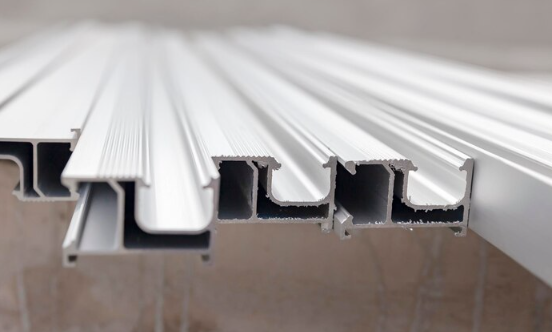
In industrial environments, cables run across walls, ceilings, and sometimes floors. When left exposed, these cables can create safety risks and lead to messy, unorganised systems. Whether it’s a large factory or a small production floor, managing cable wire installations with care becomes vital.
PVC Trunking has grown into a trusted solution for handling cables in industrial spaces. It keeps wires protected, contained, and out of harm’s way. More than just a tidy method, trunking brings strong safety advantages. In this guide, explain why trunking matters, how it works, and how it supports long-lasting, hazard-free systems.
What Is PVC Trunking?
PVC Trunking is a plastic casing that houses cable wire systems. These casings come in various shapes and sizes, often rectangular, and snap shut to seal cables inside. Workers can attach them to walls, ceilings, or machinery frames.
The PVC material resists corrosion, keeps moisture out, and adds physical protection. It also allows for fast cable changes without cutting or damaging existing wires.
When used well, PVC cable trunking for factory wiring systems offers a neat, controlled setup that supports both safety and efficiency.
Benefits of Using PVC Trunking in Factories
Let’s look at the major ways trunking improves safety and function in industrial spaces.
1. Reduces Trip Hazards and Cable Damage
- In a busy factory, people move quickly, and machines stay active for long hours. Loose cables become a problem. Someone might trip, or a machine might cut or wear through the wires. PVC Trunking locks cables into place, keeping them off walkways and away from moving parts.
- Over time, this not only lowers injury risk but also protects the cable insulation from tears, moisture, and accidental impact.
2. Limits Fire Risks
- Unprotected cable wire can cause sparks when damaged or overheated. Sparks can ignite dust, oil, or vapour — all common in factories. Trunking forms a shield between the cables and the environment. If a short occurs inside, the casing contains the spark and limits the spread.
- While not fireproof, PVC resists ignition better than exposed wires and slows down heat transfer. This simple layer can stop a fault from turning into a fire.
3. Helps with Heat Control
- When many cables bunch together, they generate heat. This heat builds up fast, especially if placed near motors or lights. A good trunking layout allows spacing and ventilation between wires. With organised routing, air flows more freely, and heat disperses better. This keeps cables from overheating and extends their lifespan.
Organised Wiring Means Safer Maintenance
Technicians often need to inspect or replace wires. In factories without trunking, wires get tangled or buried behind walls. These delays in repair work increase error risks.
How Trunking Affects Maintenance Safety?
| Without Trunking | With PVC Trunking |
| Cables exposed or crossed | Cables sorted in fixed channels |
| Takes longer to locate a wire | Labels and access covers simplify search |
| Hard to trace faults or shorting | Clear layout supports faster testing |
| Greater risk during repair | Safer handling and fewer live errors |
Trunking brings clarity. You see what goes where. And with snap-on covers, technicians can open, replace, and re-seal without damaging other parts.
Trunking Supports Future Growth
Factories are constantly evolving. Machines are in motion, and new systems are being integrated with existing ones. It is essential for the wiring to remain flexible. PVC cable trunking for factory wiring systems helps teams adapt without rewiring the whole floor. Need to add a new motor? Open the trunking, lay the cable, close the lid. No wall drilling. No hazards left behind.
This ease reduces downtime. Production resumes faster, and workers don’t need to weave wires through tight or risky spaces.
Better Expansion Without New Risks
- As factories grow, power demands rise. Without trunking, extra cables crowd the space. Overcrowding causes poor cooling and leads to shorts or overloads. Trunking systems let engineers design routes with growth in mind. You can install wider trunking from the start or choose modular types for fast scaling.
Compliance with Safety Rules
Singapore, like many regions, has strict rules on industrial safety. This includes wiring layouts, cable exposure, and access to live parts. Trunking supports compliance in three ways:
- Prevents accidental contact – Cables don’t hang loose or pass through walkways.
2. Reduces exposed metal parts – Non-metallic casing means less risk of shocks.
3. Supports standard layouts – Trunking aligns wires neatly along planned paths, which is key for audits.
Using PVC Trunking shows that a site respects both safety and engineering standards.
Types of PVC Trunking for Industrial Use
Several types of trunking systems serve factories. Here’s a basic guide:
Common Trunking Types
| Trunking Type | Best Use Case | Features |
| Standard Rectangular | Wall or ceiling layouts | Basic routing, fits most cable sizes |
| Slotted (Ventilated) | Heat-producing setups | Allows airflow while keeping protection |
| Flexible Corner Units | Tight or angled spaces | Bends without cutting |
| Dual-Layer Channels | Data and power routing in one | Prevents interference |
Choosing the right kind depends on how many cables you use, what type they are, and where they run. Planning helps prevent future upgrades or safety gaps.
Best Practices for Installation
Even with quality trunking, poor installation can weaken safety. Use these steps to ensure long-lasting results:
- Measure and plan before cutting or fixing trunking.
- Use firm mounting clips or screws at regular gaps.
- Avoid forcing too many cables into one path.
- Leave space for air to move between wires.
- Label cables at both ends inside the trunking.
- Use colour-coded trunking when managing different systems (e.g. high-voltage, data, control lines).
Installers should also keep covers accessible. In case of emergency, you want to reach the wires fast, not break through panels or boards.
Mistakes to Avoid
Some sites use trunking but miss key details. Avoid these traps:
- Ignoring load capacity: Overfilled trunking heats up and breaks
- Running wet cables through non-sealed trunking: Moisture enters and shorts the wires
- Failing to anchor trunking securely: Vibration shakes cables loose
- Skipping labels: Repairs take longer, and mistakes happen
- Leaving trunking open or unsealed: Dust and pests enter easily
Good materials need good habits. Training workers on safe trunking use adds extra protection.
How Trunking Adds Long-Term Value?
Besides safety, trunking saves time and cost over the years. Here’s how:
- Fewer faults mean less repair work
- Easier upgrades lower downtime costs
- Safer layouts reduce injury risk
- Compliance avoids legal penalties
More than just a plastic casing, PVC Trunking becomes part of the factory’s safety culture. When used correctly, it acts as both shield and guide.
Final Thoughts
In any factory, safety and order matter. Wires run to the machines. They link power, signals, and control units. If those wires break, short, or tangle, systems fail. People get hurt. Fires spark. Loss builds up.
PVC cable trunking for factory wiring systems provides a simple, strong way to prevent these issues. It locks down the chaos and creates clear paths. Not only that, but it lets workers move freely and engineers think ahead.
Next time you see a clean run of cables tucked neatly in a corner, remember — someone planned it. Someone chose trunking, measured space, and did it right. That plan keeps lights on, motors spinning, and people safe.




